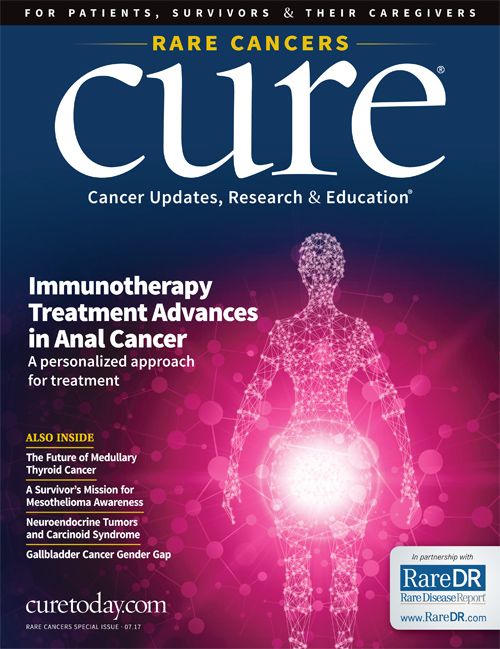Making Strides in Rare Cancers
WHAT IS A RARE CANCER? The American Cancer Society (ACS) defines it as fewer than six cases per 100,000 people each year. And, according to the ACS, that means this year there will be an estimated 208,000 new cases of rare cancers in the United States.
WHAT IS A RARE CANCER? The American Cancer Society (ACS) defines it as fewer than six cases per 100,000 people each year. And, according to the ACS, that means this year there will be an estimated 208,000 new cases of rare cancers in the United States.
So, what does this mean for patients? Is there new, cutting-edge research available to help treat them? In this special issue of CURE®, our cover story examines the progress being made with immunotherapy in anal cancer. Although rare, the number of cases of the disease have been on the rise in the U.S. over the past several decades. Most recently a multicenter phase 2 trial investigating Opdivo (nivolumab) showed great promise in patients with metastatic anal cancer, where there is no standard of care. We spoke with the lead author on this study, who explains the current advances and what lies ahead in treatment.
This month, we also hear from a mesothelioma survivor — given just 15 months to live — who, 11 years later, is making it her personal mission to raise awareness of the disease and fight for understanding for those who suffer from it. In addition, patients and survivors will learn about the differences in men with breast cancer compared with women as explained by a leading oncology expert. We also explore why gallbladder cancer rates have been decreasing in men, but not in women.
Also inside this issue, we spotlight a group that is taking advocacy work to new heights — 45,000 feet up in the air! Corporate Angel Network (CAN) is helping patients with cancer and survivors gain access to top-rated cancer centers for treatment that they might not otherwise have received close to their hometown. CAN offers free flights to and from the centers throughout the U.S. thanks to the support they receive from corporations that provide space on their corporate jets. We hope you find this special issue insightful and resourceful in learning about what the future holds for patients with rare cancers.
As always, thank you for reading.
MIKE HENNESSY, SR.
Chairman and CEO
